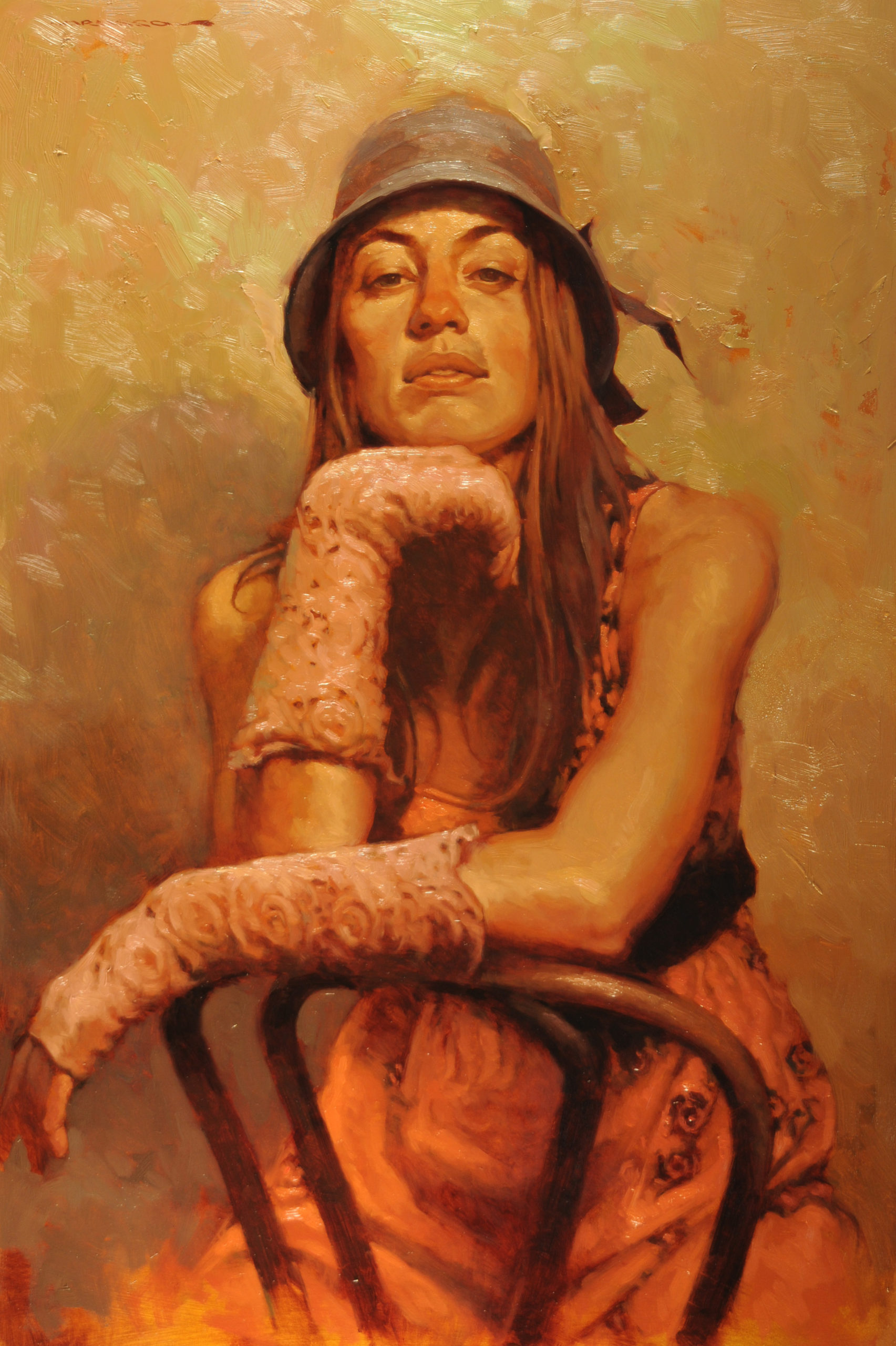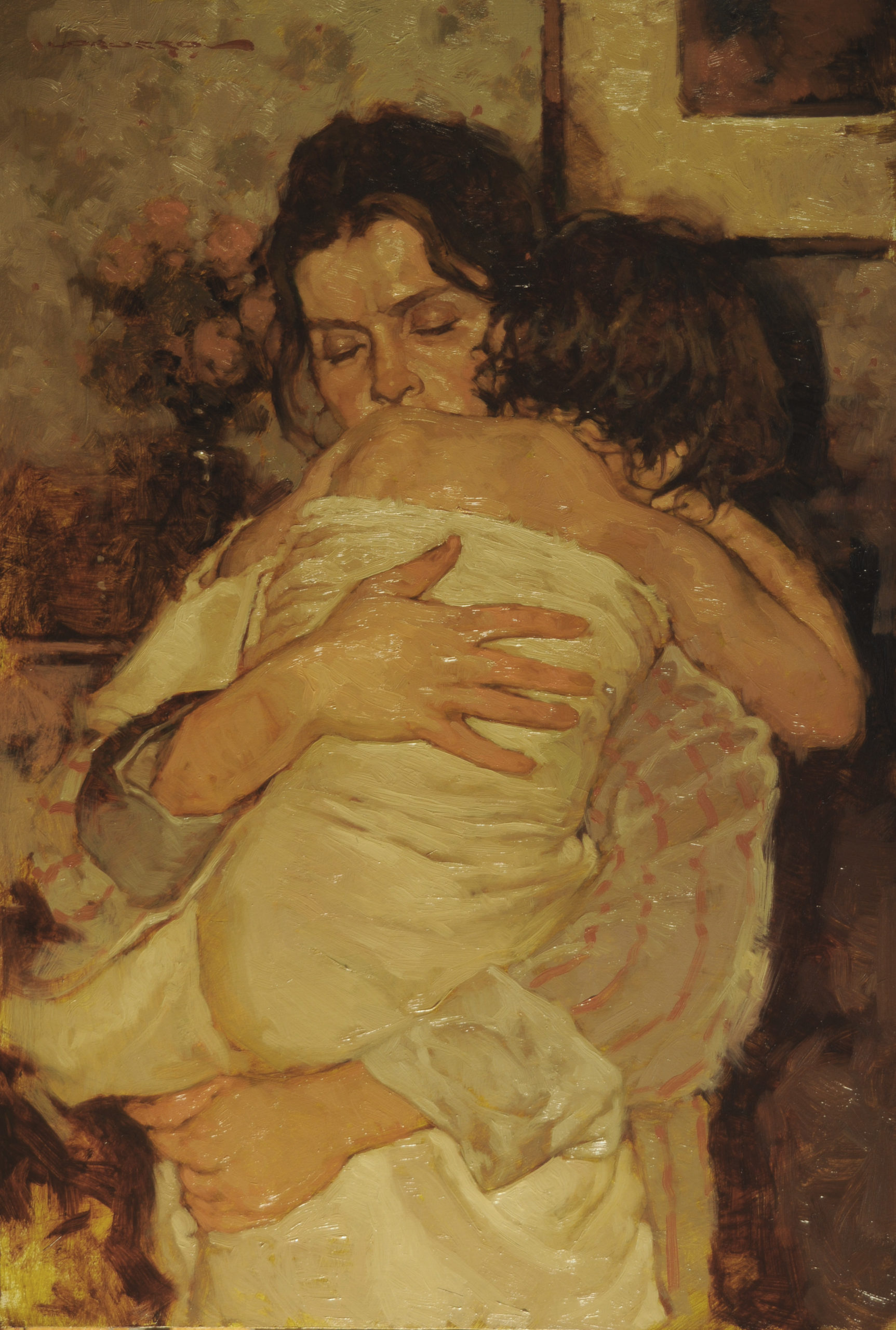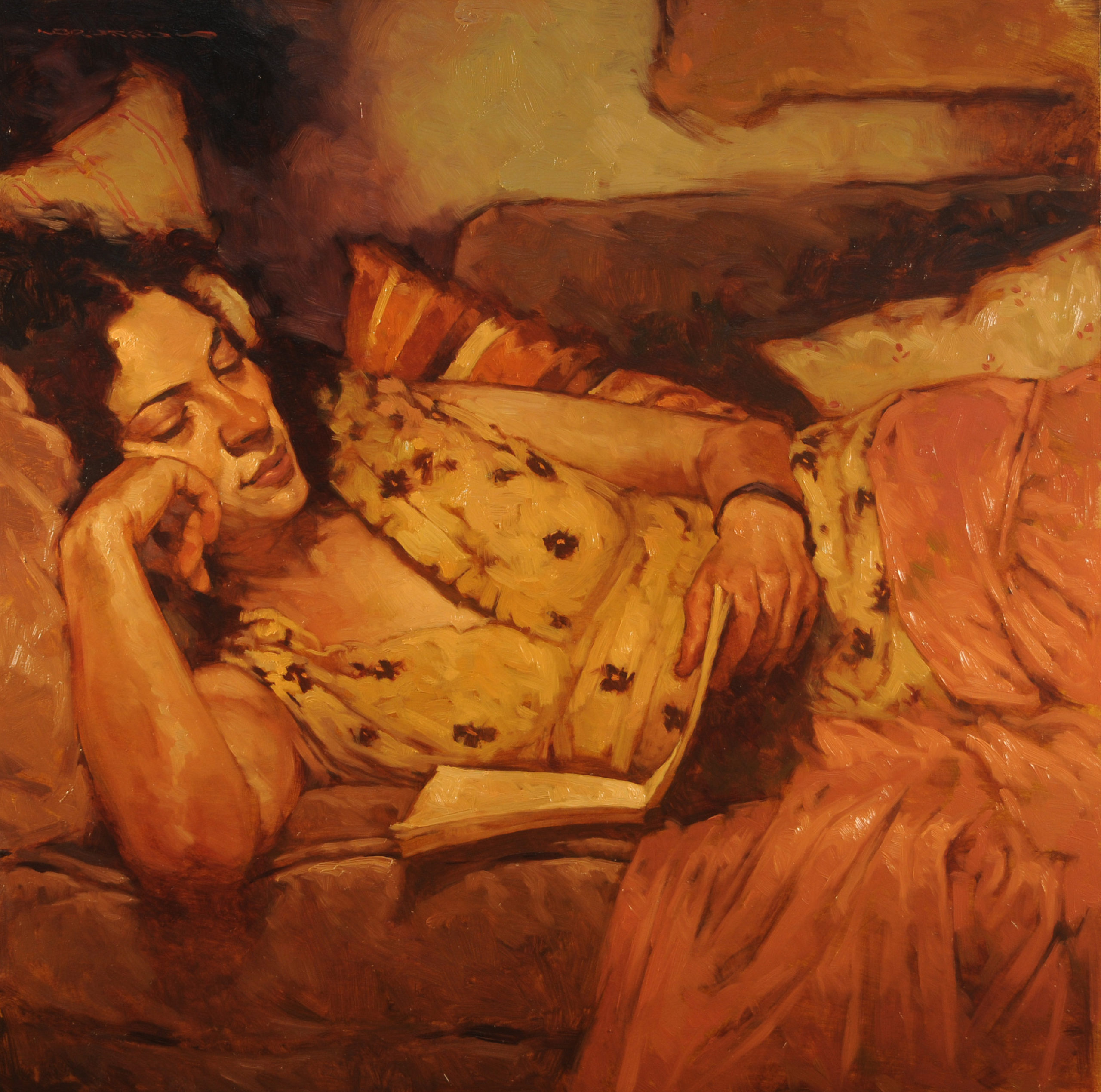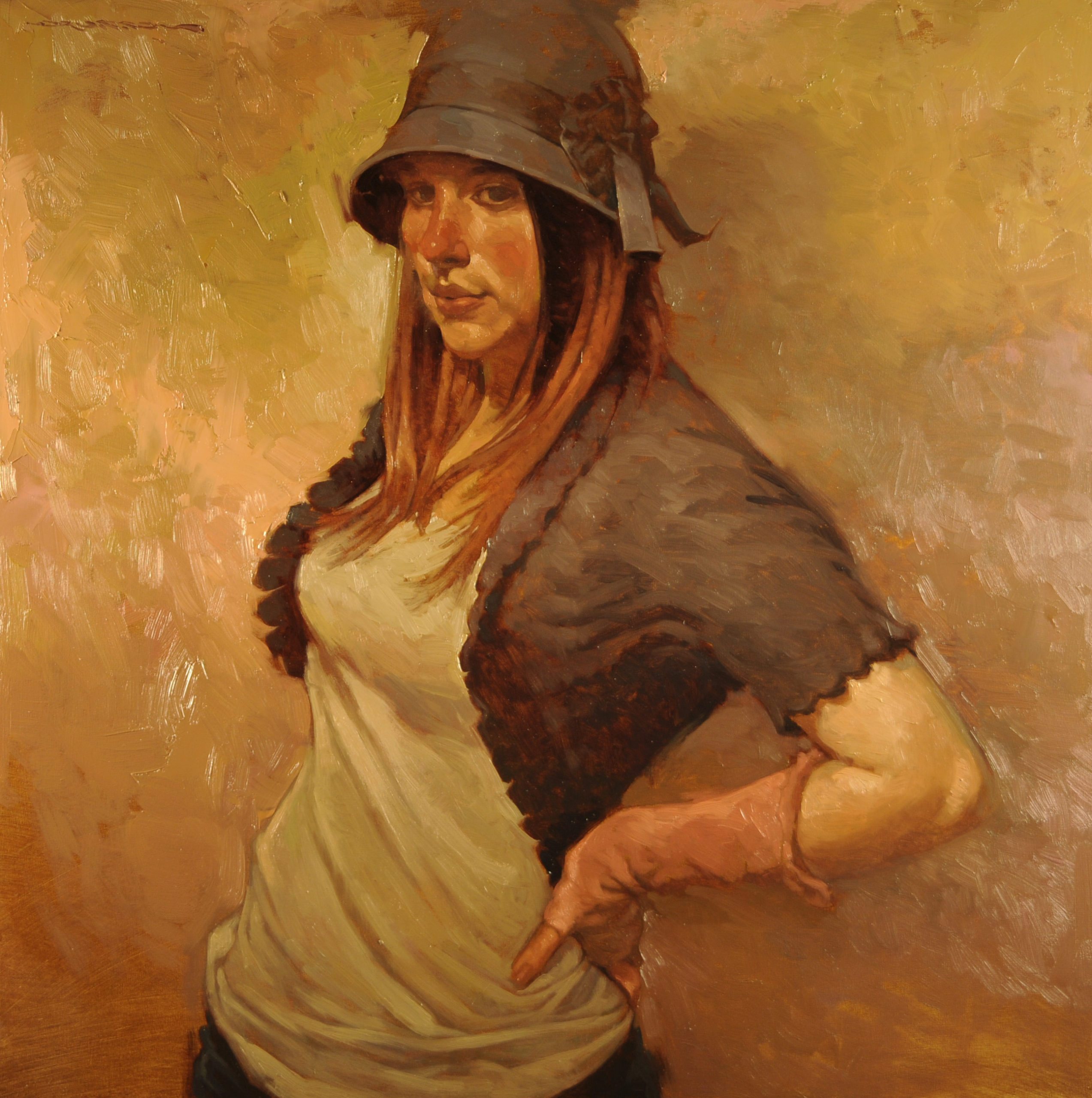Joseph Lorusso shares his philosophy, painting process, and insights on living as a professional artist; what will be your biggest takeaway from his advice?

A View From Within
BY JOSEPH LORUSSO
Philosophy
“The painter’s brush consumes his dreams.” I have often used this quote by Yeats to describe my approach and philosophy on painting. My motivation for creating is simply to connect. As artists we have the luxury not given to the layperson, to be able to create the world we choose.
I have never been a big believer that a single piece of art can change the world. Perhaps I’m too pessimistic; however, I do believe that it can change individuals, and that art, as a collective, is a very powerful force. Art in its basic form is a means of expression tied to emotions that we as a species all share, and art in any form acts as a trigger into those emotions. My work’s basic intention is to provide the viewer a starting point—that trigger—through the suggestion of a narrative, and end with the viewer’s own personal interpretation of the work ultimately completing the piece.
I begin to connect to the viewer as soon as I begin to paint, and though unintentional, once into the painting process I become a vehicle for the larger narrative. I always found myself drawn to images of people who were usually in interaction. As people we are most drawn to paintings and images of other people.
Although I was trained in the traditional approach to painting, that is to say, a foundation of strong drawing and technical ability, I am nevertheless a strong proponent of taking pride in the craft-making process—something I feel is lost in much of today’s work. Having said this, however, my goal is not to replicate nature but rather to continually hone my observation skills to help me re-interpret the scene.
In my formative training I found myself struggling to paint what I thought, as I grew I learned to paint what I saw. Now I paint what I want to see. This is what helps make my work intimate and personal. My goal is to continually seek ways to explore how I choose to see my world.

Influences
In school at the American Academy of Art, I, along with many art students then, wanted to be a famous illustrator. I came full circle in a way, beginning by looking at the old Masters, then moving into the Impressionists, namely Degas, Lautrec and Manet. After spending afternoons at the art museum, I discovered perhaps the most influential group of artists—the post-Impressionists, such as Sargent, Sorolla, Zorn, and so many others from that era. It’s important also to recognize the great illustrators from the golden age such as Pyle, Cornwell, Rockwell and N.C. Wyeth. These great artists still inspire many painters to this day and had a great effect on me.
Many of today’s best painters whom I admire, such as Malcolm Liepke and Mark English, began their prestigious careers as illustrators of the highest degree. I’m a strong believer that inspiration can come from anywhere and we are very fortunate to live in a time when, as Robert Henri put it, the “brotherhood” of painting still exists. I greatly admire artists such as Richard Schmid or David Leffel, who have influenced countless painters, who in turn have begun to influence others as well.
Although my work may not be similar, I recognize and appreciate their contributions. Let’s be clear, I believe art does not happen in a vacuum. One cannot be a great painter without ultimately influencing others; this is what makes him a master. It is not only expected it is inevitable.

Technique/Process
My process is nothing new, I believe in a strong drawing as a basis for everything. Once my drawing, usually in graphite, is fixed to the panel, I lay a wash to cover most of the working surface. Once this wash dries, I begin a sort of monochromatic underpainting in order to map out my darks and shadow patterns, usually with a mixture of raw sienna and black. In many ways this is the most important part of the process, as drawing and value decisions are now being made.
Finally, the last stage, once the underpainting has dried, is the fun part of laying in color. A brief step-by-step of my painting process is available on my website. I try not to get too lost or in love with my materials or process. I generally use widely available professional grade tube paints of various brands.
Perhaps one unorthodox thing is my choice of stable palette colors. While I use many standard colors, such as cadmium red light and olive green or raw sienna and terra rosa, I also have always included several premixed gray colors, many from the Holbien brand—colors such as monochrome tint warm, or rose gray and green grey. I find these to be invaluable, and they have been on my palette for years.
I also tend to experiment continually with adding new colors to my palette, as every trip to the art store becomes an adventure. My approach to color is fairly rudimentary. I do not consider myself a colorist in any manner and would label myself more of a tonalist, as my color is more about color harmony and compatibility. I find that when I look at the great paintings that I admire, I mostly see simple choices in color and composition, keeping the statement simple and direct, perhaps including a dash of drama through a punch of complementary color or contrast in the center of interest.
Additionally, my materials include hog hair filbert brushes of various sizes and my medium is generally a mixture of linseed oil and thickened linseed oil. I find this medium provides me the luxury of adding body to the paint while reducing drying time, both of which I find to be an advantage in my process. I generally work on fixed panel, usually quarter-inch fiberboard; I have also recently been experimenting with aluminum panel.
While I enjoy working on canvas for landscapes, I generally find the rigidity of panels to be more desirable for producing figurative work.

Business
The business of being an artist seems to many an oxymoron; unfortunately, business was never taught at art school—at least not when I attended. Most successful artists will tell you that managing an art career is much like running a small business.
To be blunt, in many ways you’re producing a product that collectors purchase. You spend capital to purchase frames, supplies, studio rent, etc., and in return your sold product provides you with capital to keep the whole thing going, and hopefully growing, and at some point you partner with a few trustworthy galleries that share and champion your work and your vision.
I know it doesn’t sound very romantic, but if you like keeping the lights on or having the ability to travel in order to paint, you need to have a clear sense of what your goals are and what you need to do in order to achieve those goals.
There are obviously many definitions of success. For me it was when I realized I no longer worked for a living and could provide for myself and my family through creating my own original work, something I still enjoy immensely. And it’s not a bad gig.
Learn more about Joseph at: www.josephlorussofineart.com
> Visit EricRhoads.com (Publisher of Realism Today) to learn about opportunities for artists and art collectors, including:
- Art retreats
- International art trips
- Art conventions
- Art workshops (in person and online)
- And more!





